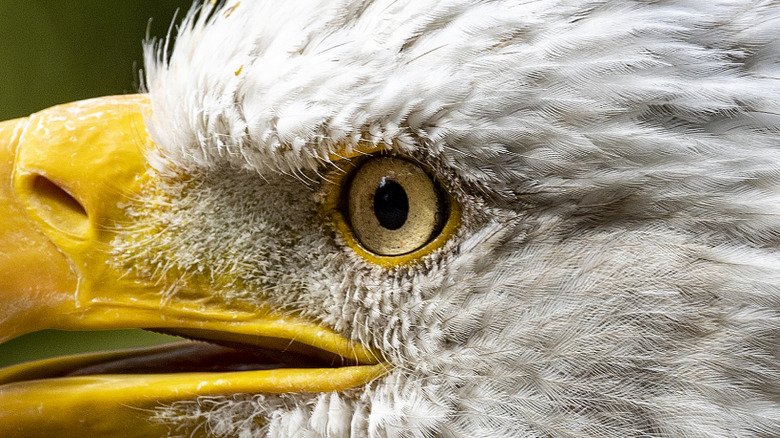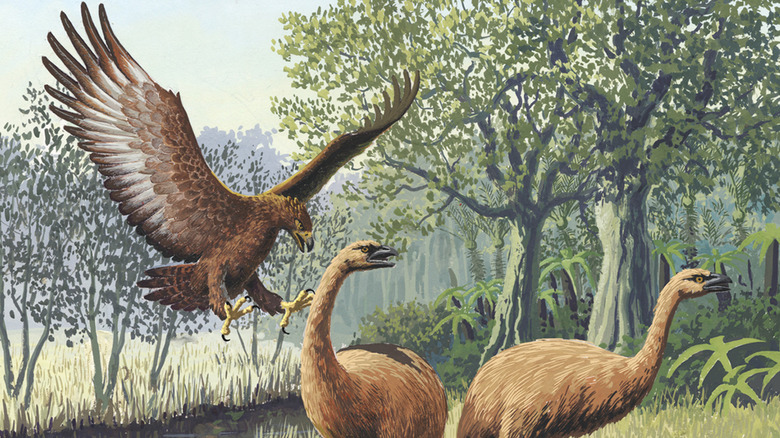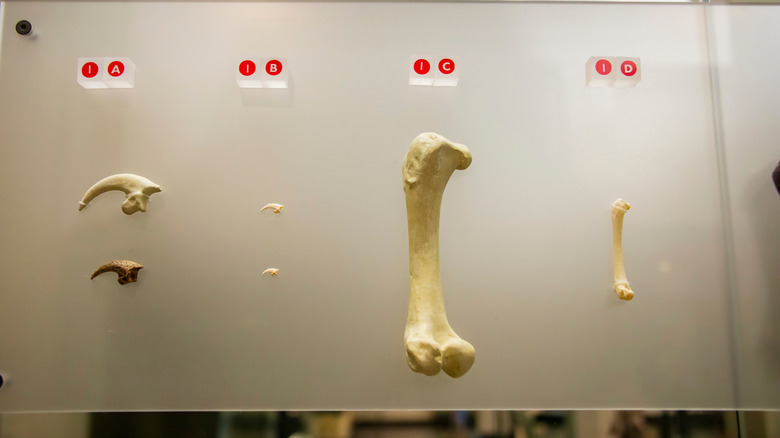The Largest Eagle To Ever Exist Dwarfs The Bald Eagle In Every Way
It's not as if we're short on frightening creatures in the modern world. Even those to which we've grown accustomed can be sort of scary when you look into it. For example, did you know that statistically speaking, the most dangerous animal in the zoo isn't a lion but an elephant? Or how about the small, adorably-named cookiecutter shark, which is actually terrifying due to its ability to rise from the deep, latch onto your body, and instantly remove a perfect circle of flesh? That's to say nothing of the more traditionally fear-inducing animals that inhabit our planet such as great white sharks and tigers.
But for whatever reason, history can claim to have outdone pretty much every imposing creature alive today. The fossil record is full of extinct nightmare beasts that, if they were still living, would basically destroy Earth. A 23-foot long crocodile with legs that allow it to outrun its prey? A 50-feet-long 1.25-ton snake capable of hunting on land and underwater? It's all there in the historical record.
None of these examples, however, could menace human beings from the sky, which is exactly what a giant bird known as the Haast's eagle did. This huge apex predator once terrorized New Zealand's South Island and only went extinct relatively recently, dying out in the early 1400s. Had it survived, it would easily dwarf today's bald eagle (and every other species of eagle for that matter), making it yet another extinct nightmare beast.
Haast's eagle was the largest, deadliest eagle to ever live
Haast's eagle isn't quite as imposing as, say, the carnivorous terror bird taller than a basketball player whose bones were discovered in 2024, but it is the largest and heaviest eagle ever to exist, weighing as much as 40 pounds and boasting a wingspan of almost 10 feet. In comparison, the bald eagle's wingspan can reach up to a not insignificant 7 feet and it weighs up to 14 pounds, which is impressive, but that's tiny compared to the Haast's eagle.
The Haast's eagle was endemic to New Zealand, meaning it only existed in that country and nowhere else on Earth. Thanks to almost completely intact fossils, scientist are able to confirm that the animal had the body and wings similar to today's eagles with legs and a bill that were larger and more powerful than the largest extant vulture species. Māori oral tradition suggests the eagle had black feathers with a hint of yellow or green, while red feathers adorned its head. This extinct predator had feet and claws that were as large as a tiger's, which allowed it to hunt creatures much larger than itself.
This massive hunter feasted on ducks, swans, and geese, but it also terrorized New Zealand's moas, large flightless birds than weighed as much as 440 pounds. Despite their significant weight, the moa were unable to overcome the Haast's eagles' sharp talons that were up to 3 inches long and vulture-like bills which measured as long as 5 inches. The moa were essentially at the mercy of one of the deadliest raptor species to ever exist. Scientists who have studied the bones of this giant bird concluded that after it descended on a moa, it would fly into their hind quarters and use its feet and talons to grapple with the animals, before using its impressive grip to crush the skulls of its prey.
What happened to Haast's eagle?
As you might expect from a bird as large as Haast's eagle, the aerial predator was incredibly hardy and managed to survive multiple glacial periods. Of course, it helped that Haast's eagle was so fearsome. If crushing the skulls of its prey isn't enough to convince you of how formidable this giant bird was, then how about the fact that, based on its pale-headed appearance, researchers are fairly certain that the Haast's eagle ate by sinking its head into the body cavities of its victims and essentially disembowelling them?
With all this in mind, you might think that Haast's eagles presented a major threat to the humans who also inhabited New Zealand at the time. However, there's no evidence that the bird actually preyed on humans. That said, Māori oral tradition included giant birds known as "pouākai" and "hokioi," which may well have been representations of Haast's eagle. The tradition also makes mention of the birds attacking human children.
What could possibly put a permanent end to such a formidable creature? Well, a lack of prey. That is to say, we know the Māori hunted the moa to extinction in the early 1400s. As a result, Haast's eagle was left without its main food source. This was likely exacerbated by the fact humans also torched large areas of South Island's forests and shrublands, reducing the eagle's habitat. Lastly, it's thought that humans may have even hunted Haast's eagle for its bones, which they likely turned into tools. All of this means that, shortly after the extinction of the moa, Haast's eagle also disappeared forever — which, while tragic, is sort of reassuring.


